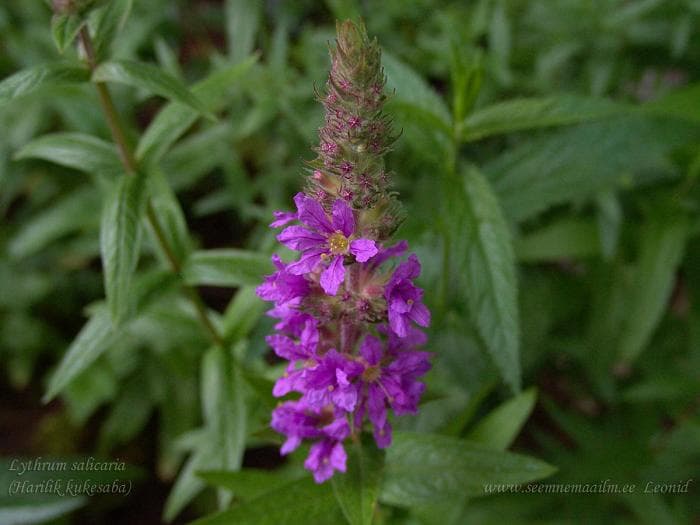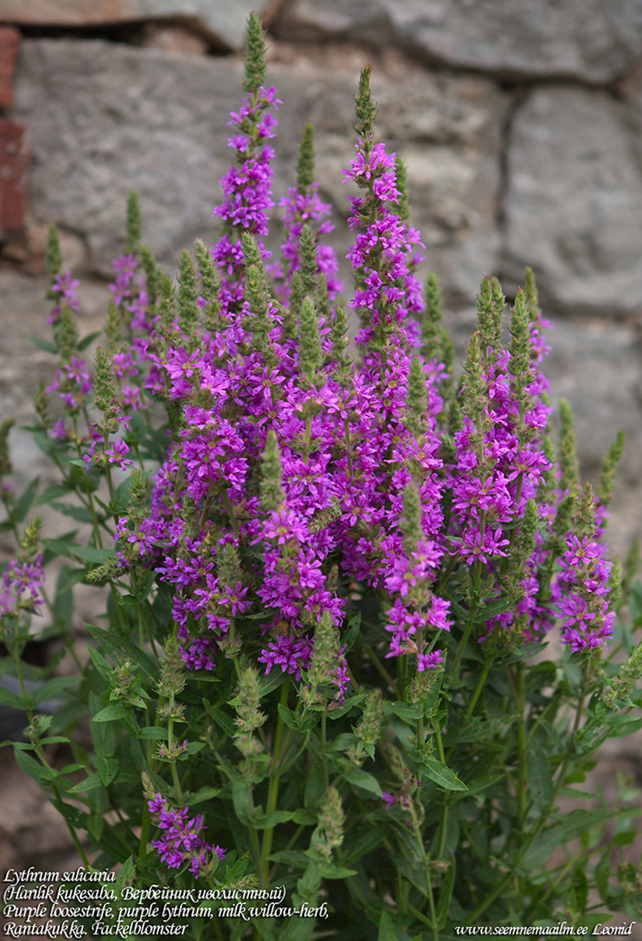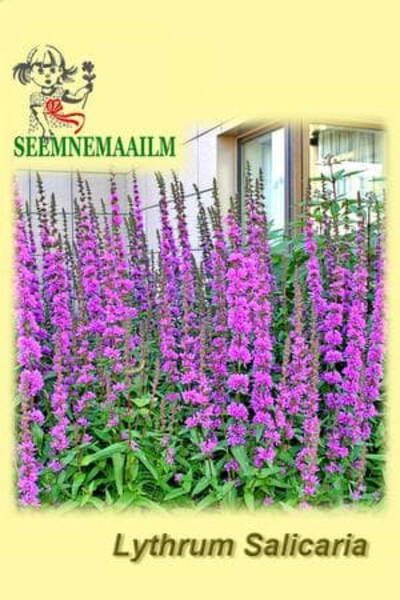Great plant for shady places!
Flowers or seedcapsules for cutting.
Flowering season: Juni-September.
Winter hardiness zone: Z3-Z9.
Height: 100 cm. Blooms continually.
Shrub for gardens with moist soil. He is loved by bees and butterflies.
Straight, strict bush 80-120 cm high. Leaf lanceolate, green, red in autumn. The flowers are collected in dense candle-shaped spikes, purple-red, star-shaped, small and up to 1 cm in diameter.
Blooms in June-August. It is an excellent honey plant. The fruit is an oblong-oval capsule, the seeds are small. 1,0 g = 24000 seeds.
The plant is winter hardy.

Location: grows well in a sunny or semi-shady place, unpretentious, tolerates drying out of the substrate.
Soil: fresh, moist, aerated, rich in nutrients. Moisture-loving. They tolerate stagnant waterlogging well, but only in the summer, when they can be immersed in a reservoir to a depth of 30 cm.
Care: water and fertilize well. Remove faded inflorescences immediately to prevent seeds from getting into the soil. You can mow it. They live for many years without rejuvenation. If there is an excess of nitrogen in the soil, it may lose vertical growth.
Reproduction: vegetatively by dividing the bush and root cuttings in early summer. Can be propagated by seeds.
Sow seedlings in January-March. The optimal temperature for germination is +15+18 °C, seedlings appear 20-30 days after sowing. Pre-sowing treatment and stratification are not required. They bloom 2-3 years after sowing.
If you want to propagate an old lythrum bush vegetatively, you will have to arm yourself with... an ax. In an adult plant, the rhizome becomes woody.
It is best to propagate varieties by root cuttings.
Application: for cutting, used in group plantings, various flower beds, including near ponds. Valued for long-lasting abundant flowering.

Spiked loosestrife, milk willow-herb, Purple loosestrife, purple lythrum, purple willow-herb.
* The herb and rhizomes of Lithrum salicaria are used for medicinal purposes.
Tannins and saponins were found in the rhizomes. Glycosides, tannins, essential oil, mucus, resin, glucose, and carotene were found in the aerial part of the plant. The seeds contain alkaloids.
Decoction, infusion and tincture of roots, herbs and flowers have anti-inflammatory, antibacterial, diuretic, analgesic, astringent, wound healing effects and are used for gastralgia, colic, gastroptosis, colds, headaches, menorrhagia, venereal diseases, as an antidote for bites by rabid animals and snakes.
An infusion of fresh roots and leaves of lythrum in the form of lotions is applied to bruises and wounds.
• 1 tsp. spoon of flowers in 1 cup of boiling water, leave for 30 minutes, strain.
Take 1/4-1/3 cup before meals 3 times a day for diarrhea and dysentery.
* In food terms, young shoots of the plant are used - like spring greens, after a short blanching. The recipes for such salads are quite standard.
But, what is especially interesting is that the flowers of the Lythrum are edible. They can be added to fruit salads, brewed tea, made jam, or made wine.
You can also sugar it: for this, for 1 cup of flowers you need to take 2 lightly beaten egg whites and 2 cups of high-quality sugar. Flowers must be freshly picked and completely dry. Using a soft brush, coat each flower with egg white. Dip the flowers in fine, high-quality sugar and place them on a wire rack to dry.












